User Ideas / Prospects
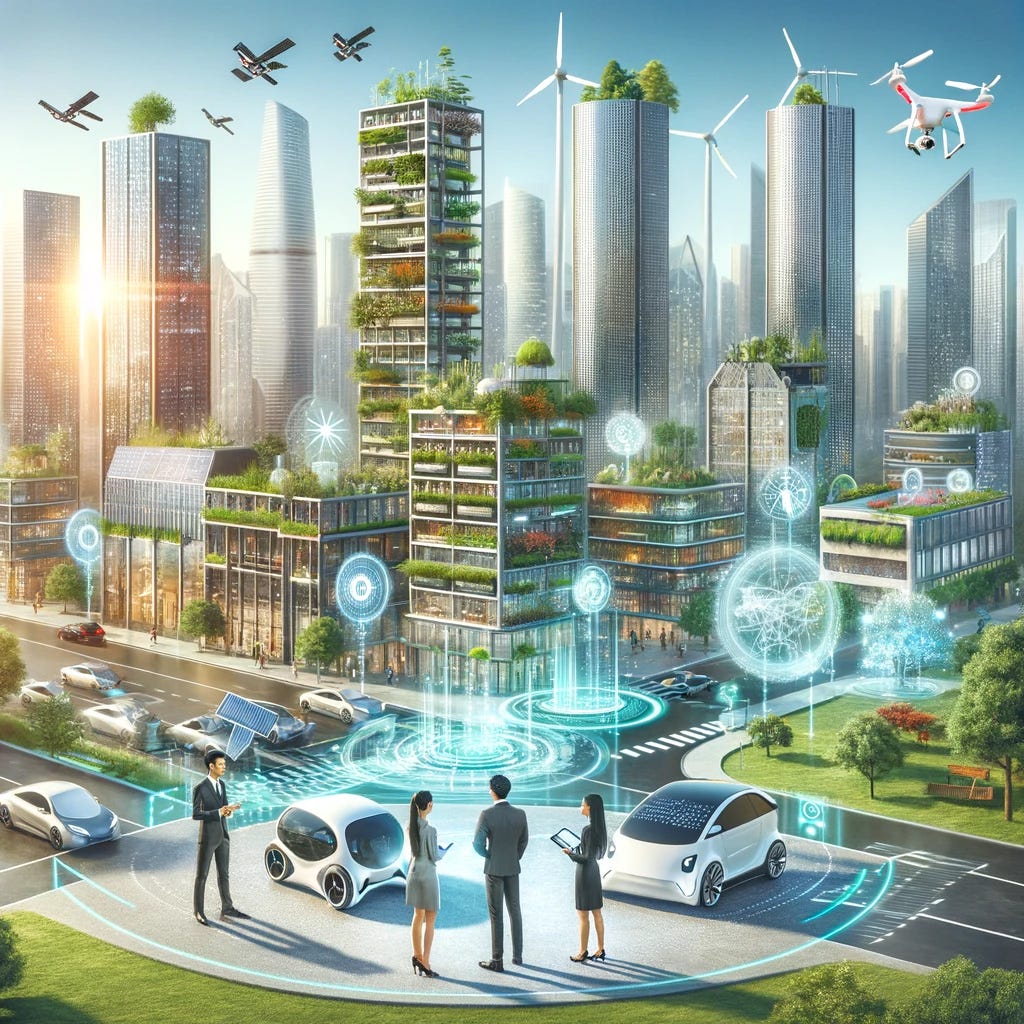
Humanity stands at a crossroads. As individuals, our choices not only define our own lives but also shape the future of our planet and society. In an increasingly digital, fast-paced, and environmentally challenged world, the responsibility for a better future lies not with governments or corporations alone, but with each of us.
To create a sustainable and advanced civilization that fosters happiness, peace, and longevity, each individual must adopt a lifestyle that nurtures the environment, embraces technological advancements mindfully, and contributes positively to the well-being of society. This article explores how a person can live harmoniously with nature, minimize their ecological footprint, and play an active role in advancing human civilization—all while leading a fulfilling, peaceful life.
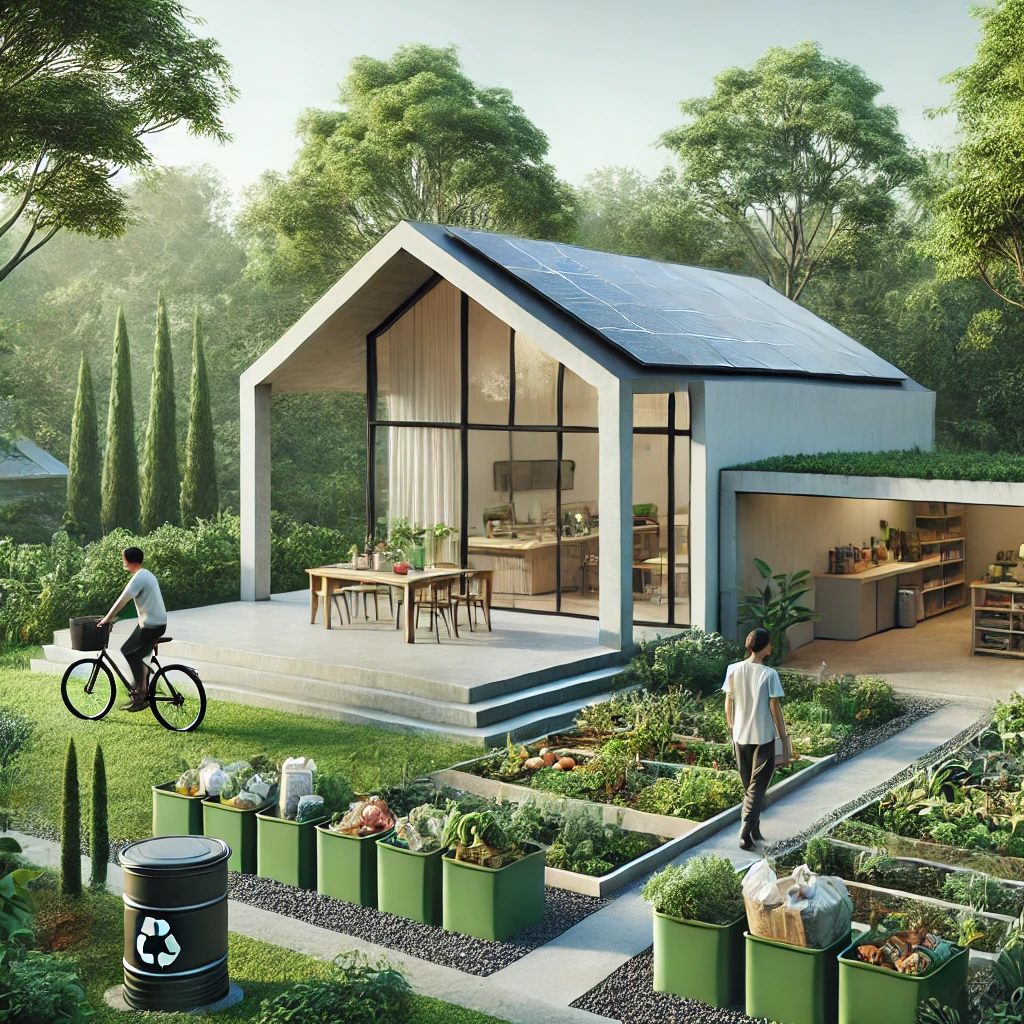
As an individual, the choices we make in our everyday lives—whether in how we consume, travel, or even eat—have far-reaching effects. Living sustainably is about more than just reducing waste; it's about adopting practices that align with the long-term health of the planet.
The Problem: Overconsumption and Environmental DegradationOne of the largest contributors to environmental degradation is the modern tendency toward overconsumption. The demand for more products, more energy, and more convenience leads to excessive waste, resource depletion, and pollution. Every item we purchase, every meal we eat, and every trip we take has an ecological cost.
A typical consumer lifestyle involves heavy use of non-renewable resources and reliance on disposable products. The rise in global temperatures, deforestation, and loss of biodiversity are largely the result of unchecked consumption and poor resource management on a personal level.
The Solution: Conscious Consumption and MinimalismTo contribute to a sustainable future, individuals need to adopt conscious consumption practices. This begins with minimalism—owning only what is necessary and valuing quality over quantity. Instead of accumulating possessions, individuals can focus on acquiring durable, repairable items that last longer and have less impact on the environment.
For instance, buying clothes made from sustainable, organic fabrics and reducing reliance on fast fashion can significantly decrease textile waste. The “buy less, choose well” philosophy advocated by designer Vivienne Westwood promotes responsible purchasing habits, urging people to buy higher-quality goods that are built to last.
In terms of daily consumption, reducing waste is key. Small actions like carrying a reusable water bottle, avoiding single-use plastics, and composting organic waste can collectively make a massive difference. These practices not only cut down on landfill waste but also reduce the demand for the extraction of new raw materials, which depletes the Earth’s natural resources.
The Problem: Energy Consumption and Carbon FootprintModern lifestyles rely heavily on energy, much of which is sourced from non-renewable, polluting fossil fuels. The carbon emissions generated from personal energy use—whether through home heating, cooling, or transportation—are among the leading causes of climate change.
The Solution: Energy Efficiency and Renewable PowerAs individuals, we have the power to drastically reduce our energy consumption and switch to cleaner alternatives. For example, installing energy-efficient appliances and using LED lighting in the home can cut electricity use by up to 75%. Simple habits like turning off lights, unplugging devices when not in use, and setting thermostats mindfully can also reduce unnecessary energy waste.
If possible, switching to renewable energy sources like solar power at home is a game-changer. Solar panels are now more affordable than ever and can allow individuals to generate their own clean electricity. Countries like Australia are seeing a rise in individuals installing solar panels on rooftops, making their homes energy-independent and carbon-neutral.
For transportation, opting for electric vehicles or cycling and walking instead of driving can drastically lower one’s carbon footprint. Norway has set a powerful example, with 80% of its new cars being electric, but on an individual level, even carpooling or using public transport can be impactful in reducing emissions.
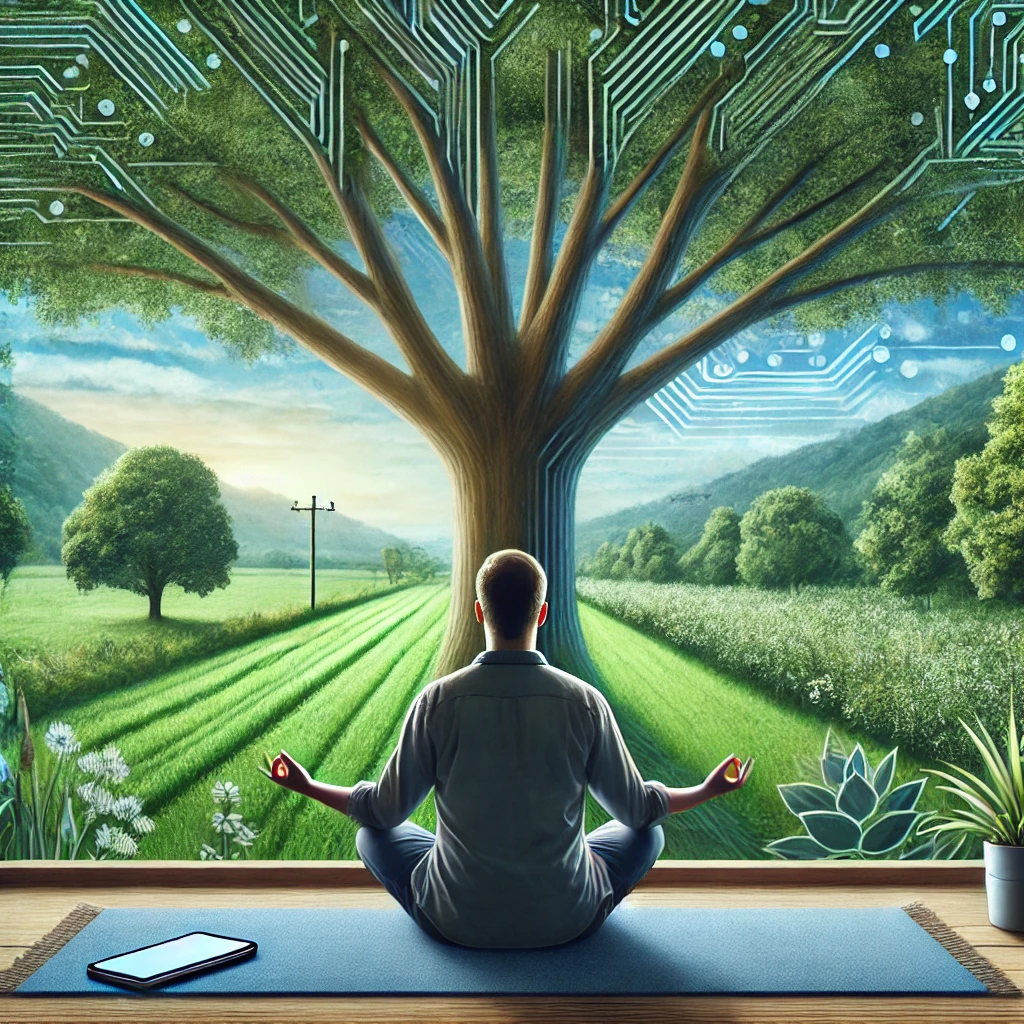
Living sustainably isn’t just about how we interact with the external world. It also involves how we care for our mental and emotional health. A mindful lifestyle is essential for cultivating inner peace, which directly influences our interactions with others and the environment.
The Problem: Stress, Distraction, and Disconnection from NatureMany people in today’s world feel overwhelmed by work pressures, technology, and constant connectivity. The fast pace of life often leads to burnout, chronic stress, and a sense of disconnection from the natural world. When individuals are stressed or distracted, they tend to make unsustainable choices—choosing convenience over consciousness, opting for disposable goods, and overlooking the long-term impact of their actions.
The Solution: Practicing Mindfulness and Finding BalanceMindfulness is a personal practice that involves paying attention to the present moment without judgment. It helps individuals cultivate self-awareness, reduce stress, and make more deliberate choices in all areas of life. By practicing mindfulness, one can become more attuned to the impact of their actions, making it easier to adopt sustainable habits.
Meditation is a powerful tool for developing mindfulness. A regular meditation practice allows individuals to step back from their busy lives, reflect, and connect more deeply with themselves. This clarity enables people to focus on what truly matters—both personally and in relation to the environment.
For example, starting the day with a 10-minute mindfulness practice can set a calmer, more focused tone, helping people become more intentional in their choices. Apps like Headspace and Insight Timer offer guided meditation sessions specifically tailored to reducing stress, improving focus, and enhancing well-being.
The Problem: Over-Reliance on Technology and Screen TimeWhile technology has enabled incredible advances, overuse of devices can lead to mental exhaustion and disconnection from the physical world. People are spending more time on screens and less time outdoors, which is contributing to health issues like digital fatigue, sleep disturbances, and even anxiety.
The Solution: Digital Mindfulness and Nature ImmersionTo counteract the negative effects of technology, individuals can practice digital mindfulness—being conscious of how they use technology and creating boundaries. For instance, setting time limits for social media, turning off notifications, and scheduling regular "screen-free" hours can improve mental clarity and emotional well-being.
Another powerful solution is to spend more time in nature. Numerous studies show that being in natural environments reduces stress and boosts mental health. Forest bathing, a Japanese practice known as Shinrin-yoku, involves immersing oneself in nature and experiencing its calming, restorative effects. By making it a habit to walk in the park, hike, or even simply sit in a garden, individuals can reconnect with the natural world and experience greater well-being.
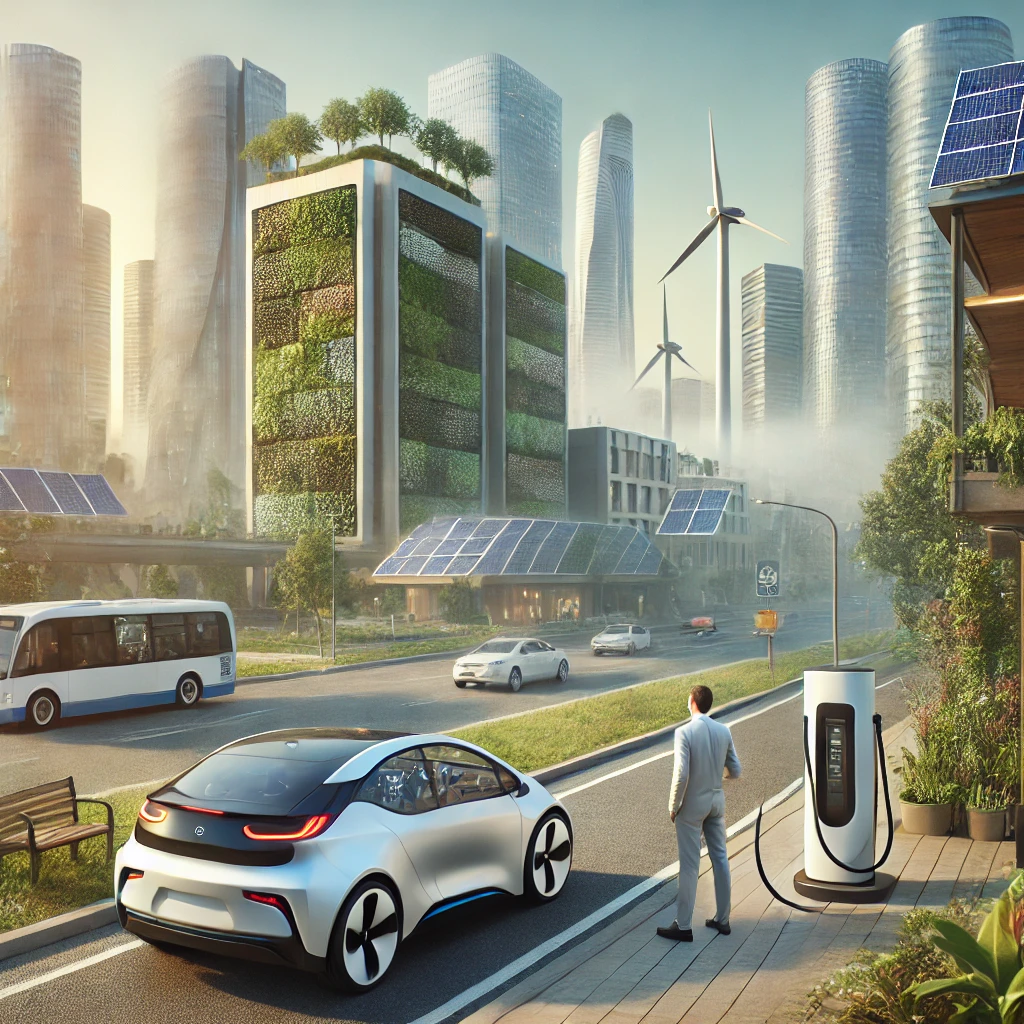
A pollution-free environment is crucial for the long-term health of our planet and future generations. While systemic changes are necessary, individuals can make impactful contributions by leveraging the power of modern technology. From the way we power our homes to the transportation choices we make, technology provides us with tools to live in ways that are cleaner, smarter, and more sustainable.
The Problem: Air and Water PollutionOne of the most pervasive environmental issues is pollution, particularly air and water contamination. Fossil fuel-based energy, industrial emissions, and vehicle exhausts contribute to poor air quality, leading to respiratory problems and premature deaths. Similarly, water pollution from plastic waste, toxic chemicals, and agricultural runoff threatens aquatic ecosystems and human health.
The Solution: Adopting Clean Energy TechnologiesIndividuals have the power to combat pollution by embracing clean energy technologies in their homes and personal lives. Solar panels and wind turbines are becoming increasingly accessible to homeowners, offering an effective way to generate renewable electricity. By installing solar panels on a rooftop, a household can reduce its dependence on the grid and significantly cut its carbon emissions.
If solar installation isn’t feasible, individuals can opt for green energy plans offered by utility companies. Many providers now offer electricity sourced entirely from renewable sources like wind or solar farms. Switching to these plans is a simple yet powerful step toward reducing one’s personal carbon footprint.
In terms of transportation, electric vehicles (EVs) offer a clean alternative to traditional gas-powered cars, which are major contributors to air pollution. Brands like Tesla, Nissan, and Chevrolet have made electric cars more affordable and accessible, with charging infrastructure rapidly expanding. Individuals who can’t switch to EVs immediately can still reduce their transportation-related pollution by carpooling, using public transit, or opting for biking and walking when possible.
The Problem: Plastic Waste and Environmental ContaminationPlastic waste is one of the most visible and troubling forms of pollution. Over 300 million tons of plastic are produced each year, much of which ends up in oceans, landfills, or incinerators, releasing harmful toxins into the environment. Single-use plastics, such as bottles, bags, and straws, are a major part of the problem.
The Solution: Reducing Plastic Use with TechnologyTo address plastic pollution, individuals can turn to innovative products and technologies that minimize or eliminate the need for single-use plastics. For example, reusable water bottles made from stainless steel or glass are increasingly popular, helping to reduce the demand for plastic bottles. Smart water purifiers installed at home can provide clean drinking water, eliminating the need for bottled water entirely.
For household goods, companies like Blueland offer cleaning products in tablet form, designed to be mixed with water in reusable containers. These products reduce plastic waste while also minimizing shipping-related emissions due to their compact packaging.
For food storage, beeswax wraps are a sustainable alternative to plastic cling film, while products like Stasher bags offer reusable silicone bags for storing food items. These small changes in individual habits can significantly reduce the amount of plastic waste generated daily.
Technology also offers recycling solutions. Apps like iRecycle help individuals find local recycling centers that accept items like electronics, glass, and hazardous materials, ensuring that these materials are disposed of properly rather than contributing to pollution.
The Problem: Industrial and Agricultural PollutionThough individuals may not directly contribute to large-scale industrial pollution, the products we consume daily—food, clothing, and electronics—often come from industries that heavily pollute the environment. Intensive farming practices, for example, rely on harmful pesticides and fertilizers that contaminate water sources and damage ecosystems.
The Solution: Supporting Sustainable InnovationsIndividuals can combat industrial pollution by making more sustainable purchasing decisions. Supporting companies that prioritize green manufacturing and ethical sourcing can drive demand for cleaner production methods. Apple and Dell, for instance, are working to reduce the environmental impact of their electronics by using recycled materials and designing products for longer life cycles.
In terms of food consumption, individuals can opt for products from organic farms that avoid chemical pesticides and fertilizers, or choose plant-based diets, which have a lower environmental impact than meat-heavy diets. Plant-based food alternatives, like those from Beyond Meat and Impossible Foods, allow people to enjoy the same flavors as meat while reducing the greenhouse gas emissions associated with livestock farming.
For home gardening enthusiasts, using composters and smart irrigation systems reduces waste and conserves water, helping create pollution-free environments on a personal level. Composting food scraps at home returns nutrients to the soil, reducing the need for chemical fertilizers.
The Problem: E-Waste and Hazardous MaterialsWith rapid technological advancement comes the issue of electronic waste (e-waste). Smartphones, laptops, and other electronics often have short life cycles, leading to a significant amount of e-waste, which contains hazardous materials like lead, mercury, and cadmium. When improperly disposed of, these materials can leach into the soil and water, causing serious environmental damage.
The Solution: Extending Device Lifecycles and RecyclingAs individuals, one of the most impactful ways to reduce e-waste is by extending the lifecycle of electronic devices. Instead of upgrading to the latest smartphone or laptop every year, individuals can make use of their current devices for longer periods by ensuring proper care and repair. Right to Repair movements advocate for policies that allow individuals to repair their own electronics instead of discarding them for minor issues. Websites like iFixit provide guides and tools to help people repair their devices, extending their usability.
Recycling e-waste properly is also crucial. Many companies and local governments offer e-waste recycling programs that safely extract valuable metals and dispose of hazardous materials. By participating in these programs, individuals can prevent e-waste from ending up in landfills, where it can contaminate the environment.
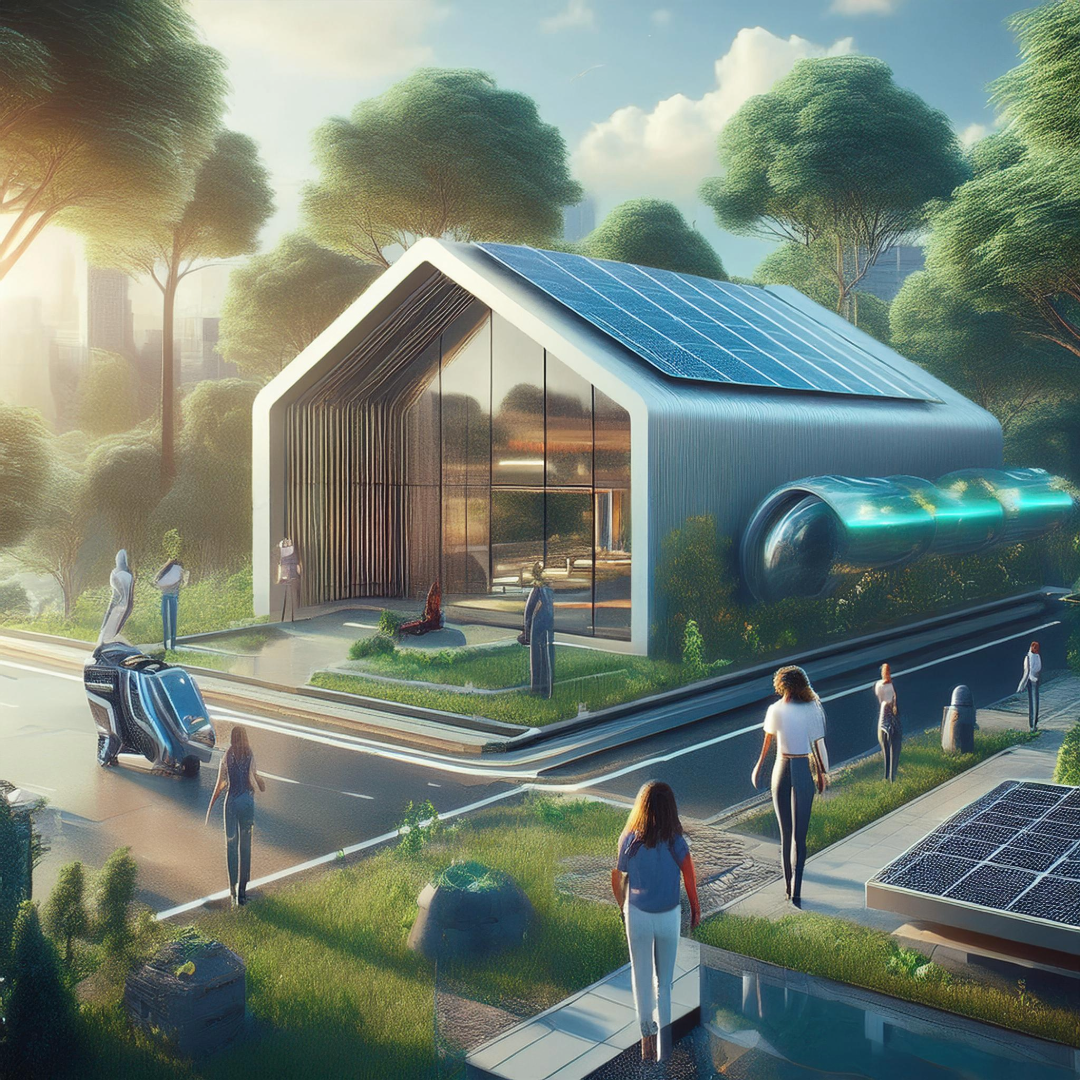
In the digital age, technology is not only shaping our world but also the way we live our daily lives. Individuals have the opportunity to leverage technology in a way that enhances both personal well-being and the collective advancement of society. The challenge lies in adopting technology mindfully—using it to promote well-being, creativity, and human connection without losing sight of our humanity.
The Problem: Over-Reliance on Technology and Social DisconnectWhile technology has improved efficiency and convenience, it has also contributed to a growing sense of isolation, reduced attention spans, and social disconnection. Screen addiction, excessive reliance on automation, and the decline in face-to-face interactions can have adverse effects on mental health and societal cohesion.
The Solution: Mindful Use of Technology and Digital BalanceIndividuals must learn to balance technology use with meaningful human experiences. For example, setting screen time limits and practicing digital mindfulness can prevent burnout and promote mental clarity. Apps like Moment track device usage, encouraging individuals to take regular breaks from screens and engage in real-world activities.
Technology can also be used to foster creativity and lifelong learning. Platforms like Coursera and edX allow individuals to learn new skills, ranging from programming to philosophy, without the limitations of geography or traditional educational systems. This not only enhances personal development but also contributes to the collective advancement of society by empowering individuals with knowledge and skills that can solve global challenges.
The Problem: Inequality in Access to TechnologyWhile technology has the potential to democratize access to resources and education, there is still a significant divide between those who have access to advanced technologies and those who do not. This digital divide exacerbates social and economic inequalities, particularly in developing regions.
The Solution: Supporting Ethical and Inclusive TechnologyAs individuals, we can support companies and organizations that prioritize ethics in tech development and strive to close the digital divide. Purchasing from companies that promote fair labor practices and contribute to social causes ensures that technological progress benefits all. Moreover, by advocating for policies that promote internet accessibility and education in technology, individuals can contribute to a more inclusive, equitable future.
.png)
In the pursuit of a sustainable future and technological advancement, it’s important that individuals do not lose sight of personal happiness, playfulness, and longevity. A balanced lifestyle that incorporates physical, mental, and emotional well-being can significantly contribute to an individual’s quality of life. Moreover, these elements help people maintain a positive and productive role in advancing society.
The Problem: Stress and Overwork as Barriers to HappinessIn today's fast-paced world, people often experience high levels of stress due to overwork, financial pressures, and societal expectations. Chronic stress is one of the leading causes of various health problems, including heart disease, mental health issues, and weakened immune systems. Stress not only reduces personal happiness but also negatively affects creativity, productivity, and one’s ability to contribute to society meaningfully.
The Solution: Incorporating Play and Leisure into Daily LifeOne of the most effective ways to counter stress is by embracing playfulness and leisure as essential parts of life. Research shows that engaging in creative play—whether through sports, arts, or hobbies—helps reduce stress and boosts mental well-being. Playfulness enhances problem-solving abilities, strengthens social bonds, and fosters a sense of joy and fulfillment.
As an individual, setting aside time each day for activities purely for enjoyment—such as painting, playing a musical instrument, or taking part in sports—can elevate mood and improve long-term mental health. Physical play in particular, such as dancing, hiking, or team sports, not only enhances physical health but also strengthens community ties.
Incorporating play into work life can also lead to increased job satisfaction and better performance. Companies like Google and Airbnb have adopted playful elements in the workplace, offering employees recreational spaces where they can unwind, brainstorm, and reconnect with their creativity.
The Problem: Sedentary Lifestyles and Lack of Physical HealthThe rise of technology has made life more convenient but also more sedentary. Many individuals spend hours sitting in front of screens, leading to poor posture, weakened cardiovascular health, and a lack of physical vitality. Sedentary lifestyles, coupled with poor dietary choices, contribute to rising rates of obesity, diabetes, and other chronic health conditions.
The Solution: Prioritizing Physical Health for LongevityMaintaining an active lifestyle is essential for longevity and overall well-being. Regular exercise—whether it's walking, yoga, cycling, or swimming—has been shown to extend life expectancy, reduce the risk of chronic disease, and improve mental clarity. For those working in tech-heavy or sedentary jobs, simple habits like standing desks, stretching routines, and periodic movement breaks can mitigate the negative effects of prolonged sitting.
Diet also plays a crucial role in supporting longevity. By choosing a plant-based or Mediterranean diet, rich in fruits, vegetables, whole grains, and healthy fats, individuals can promote heart health, reduce inflammation, and support cognitive function. These dietary choices not only benefit personal health but also contribute to environmental sustainability, as plant-based diets require fewer natural resources to produce compared to meat-heavy diets.
Blue Zones—regions of the world where people live exceptionally long and healthy lives—offer valuable insights into longevity. In places like Okinawa, Japan, and Sardinia, Italy, people prioritize physical activity, community involvement, plant-based diets, and mental well-being, demonstrating that a balanced lifestyle leads to both longevity and happiness.
The Problem: The Pursuit of Happiness in a Materialistic WorldMany people equate happiness with material success, leading them to accumulate possessions and wealth, often at the expense of environmental and personal well-being. This pursuit of external validation through material goods fosters a cycle of dissatisfaction and stress, as true happiness cannot be found in excess consumption.
The Solution: Finding Joy in Minimalism and Purposeful LivingTrue happiness and long-term contentment come from living a life aligned with one’s values, rather than accumulating material wealth. Minimalism encourages individuals to seek happiness in experiences, relationships, and personal growth rather than possessions. By simplifying their lives and reducing unnecessary consumption, individuals can find greater satisfaction and inner peace while contributing to the reduction of environmental strain.
Additionally, having a sense of purpose is essential for lasting happiness. Research shows that individuals who engage in purposeful activities—such as volunteering, pursuing creative projects, or mentoring others—report higher levels of life satisfaction and well-being. By dedicating time to causes that align with one’s values, individuals can make a meaningful impact on society while finding personal fulfillment.
Apps like Happify and Gratitude Journal encourage people to focus on the positive aspects of their lives, fostering an attitude of thankfulness and joy. Mindful practices such as gratitude exercises, journaling, and meditation help individuals find contentment in the present moment and resist the urge to chase materialistic goals.
.png)
The ideal lifestyle for individuals in a sustainable, mindful, and technologically advanced civilization involves more than just environmental consciousness or the use of cutting-edge technology. It requires a holistic approach that incorporates responsible consumption, mindfulness, playfulness, and personal well-being—all with an eye toward advancing human civilization and fostering peace and happiness.
By making small but impactful choices—opting for renewable energy, reducing plastic waste, embracing mindfulness, staying physically active, and finding joy in non-material pursuits—each person can significantly contribute to a pollution-free and sustainable future. A balanced life not only promotes personal happiness and longevity but also helps society thrive by fostering innovation, collaboration, and empathy.
Ultimately, the future of human civilization depends on the collective actions of individuals. Through intentional living, every person can play a role in creating a world where technology and nature exist in harmony, where progress does not come at the cost of the environment, and where the pursuit of peace and happiness drives human flourishing. This vision of an ideal lifestyle is not a distant utopia but a tangible reality, one that starts with each of us today.
